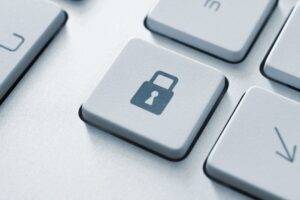How 2FA Works

Keeping your personal and business accounts secure is more important than ever.
Whether logging into a website or a server, learn how 2fa works and take these steps to ensure your accounts are protected.
“Doing what’s expected of you can make you good, but it’s the time you spend going above and beyond what’s required that makes you great!”
~ Josh S. Hinds
The Full Scoop
Managing numerous passwords for both personal and work-related accounts is a common challenge. With hundreds of passwords to remember, it becomes increasingly difficult to keep track of them all. Fortunately, password managers can assist in this task, alleviating the burden of remembering numerous logins.
To improve account security, it is important to understand the workings of 2FA, or two-factor authentication. 2FA falls under the category of multi-factor authentication, which relies on three primary factors to ensure account security:
- Username and Password
- Biometric logins
- Tokens, keys, and OTP (one-time passcode)
Exploring these Authentication Factors
The first factor is something you know, which typically involves your username and password. Your username should remain confidential, just like your password. The password serves as the key ingredient in safeguarding your cyber security. We’ve all been cautioned to create and maintain unique, complex passwords, changing them frequently. Until innovative password-less technologies like those provided by Identite become prevalent, maintaining a secure password remains essential.
The second factor revolves around something you are, typically associated with biometrics such as fingerprints, facial recognition, and retina scans. If you use a smartphone, you are likely familiar with these authentication methods. They uniquely identify you and negate the need for remembering or possessing anything, making them convenient for easy logins.
The third factor involves having a token or key physically available to you. Think of a key you use to unlock a door or, in the realm of Information Technology, a code that frequently changes, appearing on a hardware or software device. One popular implementation of this technology is receiving a text message with a unique one-time passcode (OTP) when logging into a website.
Other Forms of Authentication
For personal accounts, particularly those used for banking, it is highly advisable to enable enhanced security options. At the very least, these options often include dual-factor authentication (2FA), which sends an OTP via text message for use after logging into your online accounts.
For individuals with IT infrastructure and hardware, it is crucial to utilize 2FA authentication for all administrative accounts. When logging into servers or cloud-hosted services like Microsoft 365, always employ 2FA. Those in the IT field are often targeted by hackers, necessitating extra precautions.
Why Use 2FA
By taking the additional step of implementing MFA and 2FA security measures, you can significantly reduce the likelihood of experiencing a cyber security incident, providing yourself with added peace of mind.
Fizen Technology
These steps can typically be taken with minimal risk or time investment. Consult your IT Provider today to discover how you can leverage Multi-Factor Authentication to your advantage. The extra effort will prove worthwhile!